5 Ducks That Look Like Wood Ducks
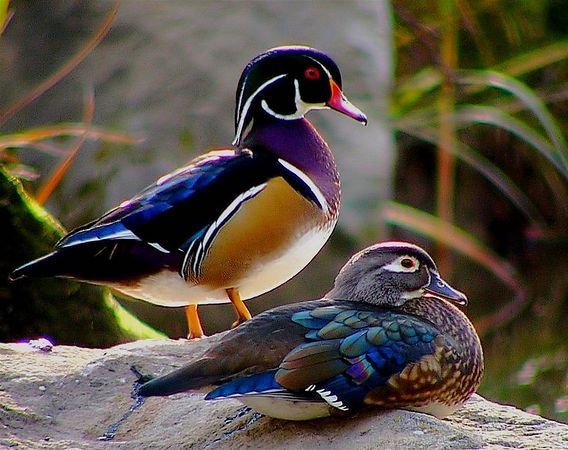
When you spot Wood Ducks, there is are high chances that you will fall in love with them right away. These ducks are colorful, graceful, and a joy to watch—especially in spring when they appear around ponds and lakes. Every time I see one, it still feels special, like a small bit of magic in nature. The drakes are especially striking, their bright plumage standing out beautifully against the more modest (yet equally charming) females. But here’s something you might not realize: the duck you’re admiring might not be a Wood Duck at all. There are a few species that look remarkably similar, and share the same vivid colors and elegant form. In fact, about five kinds of ducks resemble the Wood Duck drake so closely that it’s easy to mix them up from a distance. Their close plumage resemblance makes them fascinating—and worth learning to tell apart.
1. Mandarin Duck
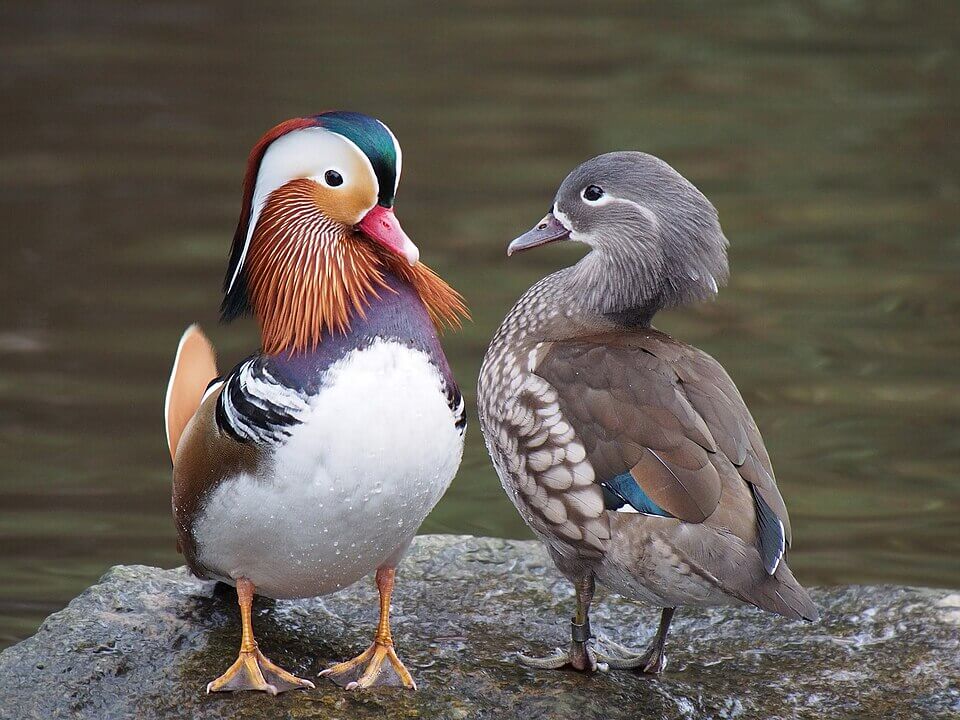
Often mistaken for the Wood Duck, the Mandarin Duck shares the same elegant shape and iridescent beauty. The male’s vivid plumage—with orange “sail” feathers rising from its back and a purple-green crest—mirrors the striking charm of the Wood Duck drake. Both species belong to the same genus (Aix), which explains their similar form and tree-nesting behavior. Native to East Asia, Mandarin Ducks are now also found in parks and ponds across Europe and parts of North America. They prefer wooded lakes and slow rivers, and unlike most ducks, pairs form strong bonds that often last for life.
2. Harlequin Duck
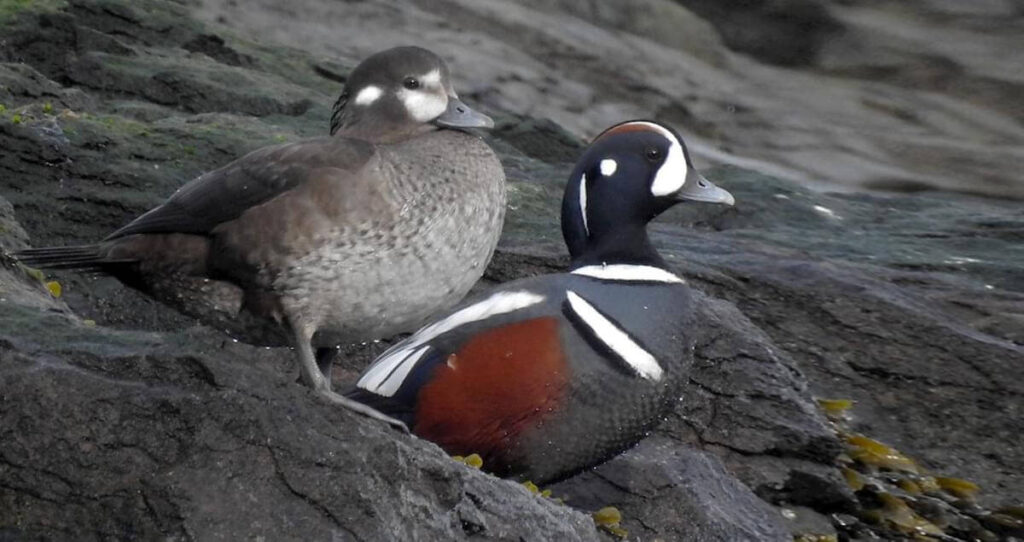
The Harlequin Duck may not have the same body shape as a Wood Duck, but its colorful, patterned plumage gives a similar visual appeal. Males have dramatic white spots and chestnut markings set against slate-blue feathers, creating an eye-catching contrast that rivals the Wood Duck’s vividness. This small sea duck is found along rocky coasts, fast-moving streams, and mountain rivers. It’s a skilled diver, feeding mostly on aquatic insects and crustaceans. Though not endangered, Harlequin Ducks are considered a species of conservation concern in some areas due to habitat loss and water pollution.
3. Baikal Teal
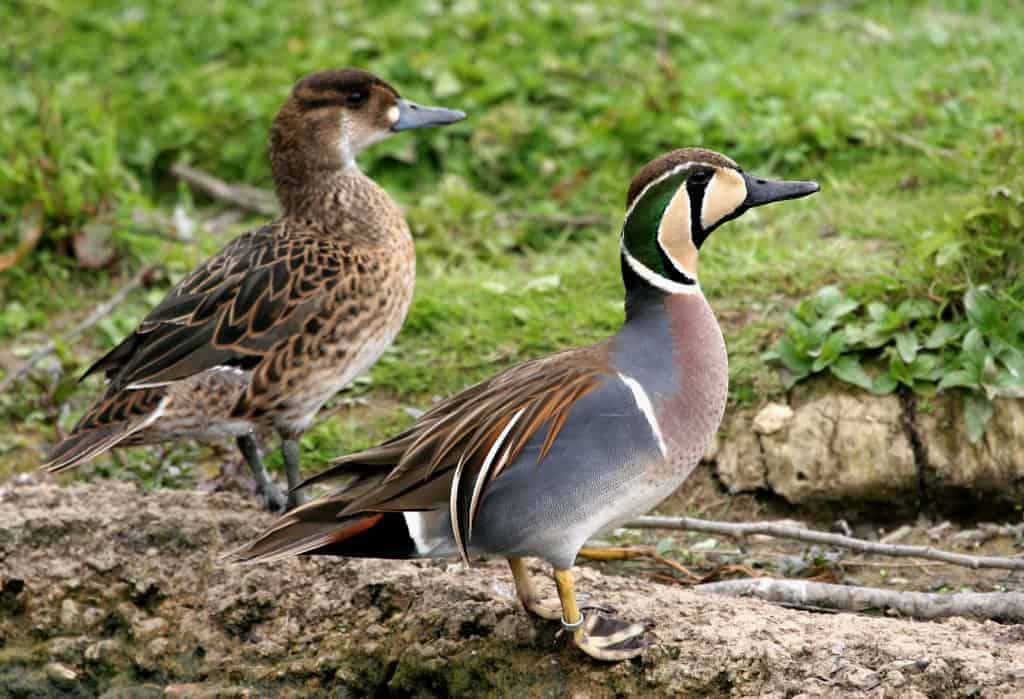
At first glance, a male Baikal Teal could easily be mistaken for a Wood Duck because of its bold face pattern—green, cream, and black markings that resemble the Wood Duck drake’s head. Originating from eastern Siberia, this duck winters in Korea, Japan, and parts of China. The Baikal Teal feeds mainly on seeds, aquatic plants, and small invertebrates in shallow wetlands. Once listed as vulnerable due to hunting and habitat decline, its population has rebounded thanks to protection and habitat restoration efforts across Asia.
4. Ringed Teal
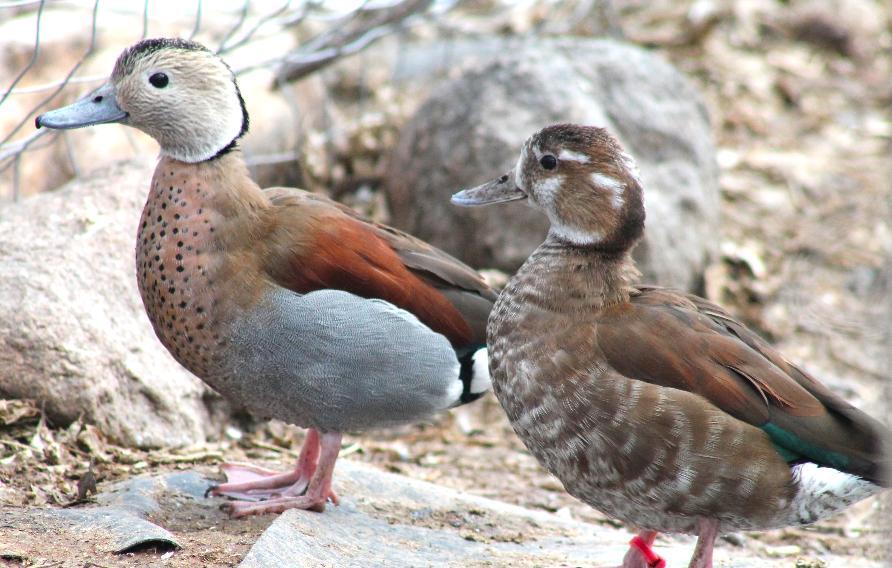
Smaller and softer in color, the Ringed Teal still recalls the Wood Duck in its compact shape and tree-nesting habit. The male’s subtle mix of pinkish-brown, gray, and black gives it a refined beauty, while both sexes share a glossy green speculum on their wings. Native to South America, this species prefers forested swamps and quiet wetlands in Argentina, Paraguay, and Bolivia. It often perches on branches—unusual for ducks—and nests in tree cavities like Wood Ducks do. Its gentle whistling call adds to its charm, especially in mixed collections where its calm temperament stands out.
5. Torrent Duck
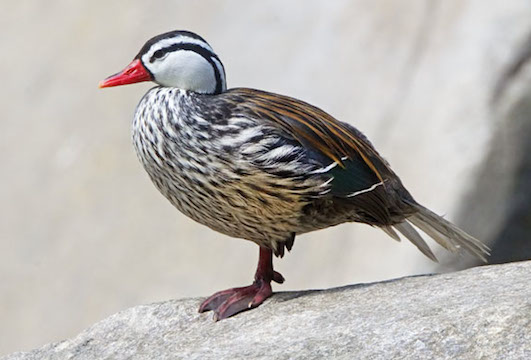
Unlike the still-water-loving Wood Duck, the Torrent Duck thrives in fast, cold mountain rivers of South America. It doesn’t look exactly the same, but its slender body, crisp white markings, and bold contrasts give it a similar grace. Males are beautifully patterned with black and white stripes, while females show rich chestnut tones. This species is famous for its ability to swim against strong currents, diving for aquatic insects in turbulent water. Found in the Andes, the Torrent Duck’s specialized habitat makes it vulnerable to river pollution and hydropower development, yet it remains one of the most remarkable examples of adaptation among waterfowl.
